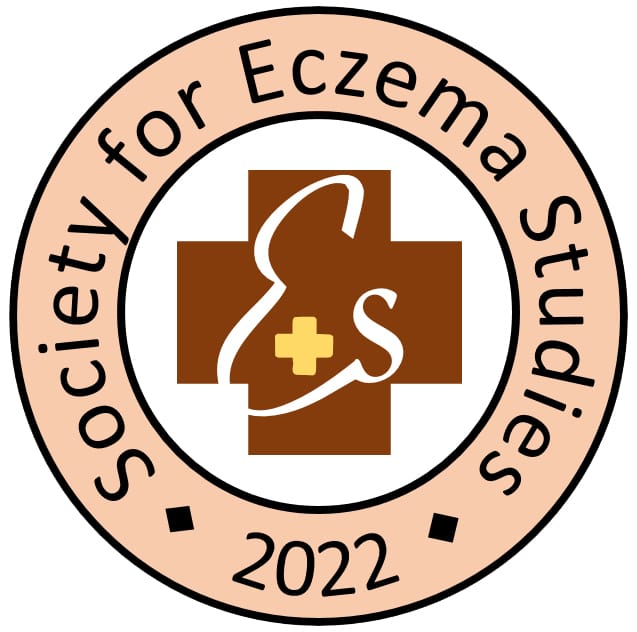Understanding Childhood ECZEMA
What is Childhood Eczema?
Childhood eczema is a common inflammatory skin condition that affects infants, toddlers, and older children. Eczema often occurs in families with a history of allergic conditions, such as asthma or allergic rhinitis.
What does eczema look like?
Symptoms can appear anywhere on the body and vary widely from child to child. They may include:
- Red or brownish patches on the skin
- Itching, which can be intense
- Dry, cracked, or thickened skin
- Small raised bumps that may ooze or crust over
Why did my child develop eczema?
What exactly causes eczema is unknown. It may however be a combination of several factors
Genetic Factors
There is a strong genetic component to childhood eczema. If a child has a family history of eczema, asthma, or allergic rhinitis, they may be more prone to developing eczema.
Environmental Triggers
Exposure to certain environmental factors can trigger or worsen eczema symptoms. These may include changes in temperature, humidity, or exposure to irritants like harsh soaps and detergents.
Allergens and Irritants
Common allergens like pollen, dust mites, pet dander, and certain foods can contribute to eczema flare-ups. Additionally, exposure to irritating substances like wool, synthetic fabrics, or certain skincare products may exacerbate symptoms.
Are all eczemas the same?
There are several types of eczema. The most common types that affect children include:
Atopic Dermatitis
This is the most common form of eczema in children. It often appears as red, itchy rashes on the face, hands, and other areas. Infants commonly develop rashes on their cheeks and on the outside of their arms and legs. In older children, eczema is more common in the elbow crease and behind the knee. While these are common areas, rashes can appear virtually anywhere on the body. The severity of eczema also varies a great deal from child to child. There are usually times where the symptoms improve (remissions), and times where the symptoms get worse (eczema flares).
Contact Dermatitis
Contact dermatitis occurs when the skin comes into contact with substances that cause an allergic reaction or irritation. This can include certain fabrics, soaps, or plants.
Seborrheic Dermatitis
Commonly known as cradle cap in infants, seborrheic dermatitis causes greasy, yellowish scales on the scalp, eyebrows, and around the ears.
How is childhood eczema diagnosed?
Your child’s healthcare provider will take a detailed medical history including family’s medical history, especially the history of eczema, asthma, or allergies. A thorough examination of the skin will help the healthcare provider diagnose eczema. They may also inquire about the child’s daily routine and potential triggers. In some cases, patch testing may be recommended to identify specific allergens that could be triggering eczema.
Is childhood eczema contagious?
Eczema is not contagious. You can’t “catch it” from someone else.
How is childhood eczema managed?
Your child’s dermatologist will prescribe medications to treat flare-ups and alleviate itching. However, developing a consistent skincare routine is essential. This includes regular bathing using mild soaps and cleansers and bland moisturizers.
What is my role in managing my child’s eczema?
Bathing and Moisturizing
Use lukewarm water for baths and mild, fragrance-free soap. After bathing, pat the skin dry and apply a moisturizer.
Choosing the Right Clothing
Select soft, breathable fabrics like cotton and avoid wool or synthetic materials. Washing new clothes before wearing them can also prevent irritation.
Identifying and Avoiding Triggers
Keep a diary to track potential triggers and avoid them when possible. This may include certain foods, environmental factors, or specific skincare products
Wet Wrap Therapy
In some cases, wet wrap therapy can be beneficial. This involves applying a damp layer of bandages or clothing over moisturized skin to help the skin absorb moisture.
Maintaining a Healthy Lifestyle
Encourage a healthy diet, regular exercise, and adequate sleep to support overall well-being.
Dietary Considerations
In some cases, certain foods may exacerbate eczema symptoms. Discuss with your doctor about potential dietary modifications.
Coping Strategies for Children and Parents
Living with eczema can be challenging, and it’s important to address the emotional impact. Teach your child coping strategies, and as a parent, seek support from other parents or professionals.
Can eczema be cured?
While there is no cure for eczema, proper management and treatment can help control symptoms.
How to deal with itching?
Keep nails short, use cold compresses, and consult with a dermatologist for appropriate anti-itch medications.
Can eczema affect school and social life?
Open communication with teachers, friends, and other parents can help create understanding and support for your child at school and in social settings.
Remember, every child is unique, and what works for one may not work for another. Consult with your dermatologist for personalized advice and treatment options.
